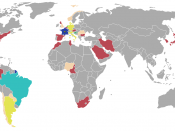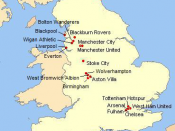Football Violence
Introduction
Foul play plays a large part in the discussion of today's soccer. Soccer, rooted in a bloody past with its links to ancient ball games, such as the Persian buzkashi, Mesoamerican peloya and the Roman game of harpastum, which in all, generally involved extreme violence, blood sacrifices and heavy injuries (Peiser, 1996).
From these roots arose today's most popular sport, where the Federation Internationale de Football Association (FIFA) represented, in 1993 up to around 150 million active players, while an estimated 400 to 500 million people play soccer world-wide (Peiser, 1996). The far-reaching nature of such a sport demands attention to be given to foul play on the field and its associated risks.
Literature Review
Although there is a lack of consensus on the true origin of aggression, there are a few theories that surround it. Terry and Jackson (1985) highlighted the genetically predisposed (instinctive) nature of aggression and the frustration-aggression hypothesis, suggesting that aggression is a product of both factors, although frustration need not necessarily result in aggression.
On the other hand, Bandura (1976) views aggression as a socially learned aspect of human behaviour. Figure 1 combines these three factors.
Figure 1 - Diagram showing the various origins of aggression in sport
Although there is some consensus on the issue of the origins of aggression, its classification where foul play is concerned seems to differ somewhat.
What can be argued from this would be the differing styles of play and culture surrounding the way soccer is played by a certain nation. Where England is concerned, aggression seems to be deeply rooted in the playing culture. One can see this from the way Association Football was played during the 1870s:
"The long kicking of the backs, selected for their strength and solidity rather than their ball skill...


